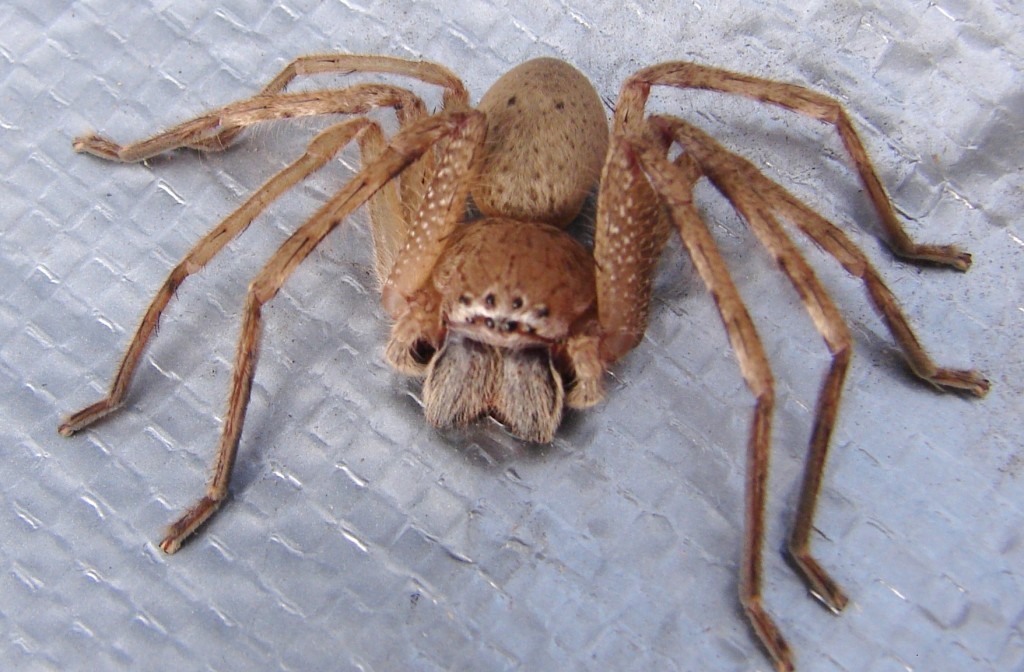



Please direct all inquiries and comments to insectidentification AT. When emailing please include your location and the general estimated size of the specimen in question if possible. Images in JPG format are preferred with a minimum horizontal dimension of 1000px if possible. By submitting images to us () you acknowledge that you have read and understood our Site Disclaimer as it pertains to "User-Submitted Content". Material presented throughout this website is for entertainment value and should not to be construed as usable for scientific research or medical advice (regarding bites, etc.).Please consult licensed, degreed professionals for such information. The logo, its written content, and watermarked photographs/imagery are unique to this website (unless where indicated) and is protected by all applicable domestic and international intellectual property laws. They are nocturnal hunters that usually only come out of hiding after sunset to pursue and ambush their prey.Beetle Identification Butterfly Identification Caterpillar Identification Spider ID Fungal Infections on Insects Nursery Web Spider Official State Insects Termite Basics Insect Molting Process Bugs of Tennessee House Wolf spiders produce silk, but mostly for the purpose of creating egg sacs. However, you won't be able to detect the presence of wolf spiders by looking for webs. In domestic environments, they can often be found around houseplants, doors, windows, basements and in garages. Wolf spiders may also venture into homes in the fall when they’re looking for a warm place to spend the winter and raise their young. Some wolf spiders hide in vegetation or fallen leaves while others burrow in soil, or build tunnels under – or between - boards, stones, firewood and even your home's siding. In mountains, rainforests, wetlands and deserts. They commonly live in grasslands and meadows, but they may also live If you spy a large, dark, fast-moving spider scurrying across your floor, it’s likely a wolf spider. Wolf spiders do have leg band markings, which brown recluse spiders do not have. However, wolf spiders do not sport the characteristic, violin-shaped marking that brown recluses do. They range from a quarter of an inch to about one and a half inches in length.īecause they are often brown, wolf spiders are sometimes confused with the brown recluse spider. Wolf spiders come in many sizes and can grow to be quite large. You are directly handling one or should one become trapped next to your skin. Wolf spider bites are most likely to occur if The females make their thick walled egg sacs in the summer and. When threatened, these spiders prefer to retreat. Gnaphosids are nocturnal hunters and spend the day in a silken retreat. Wolf spiders bite, but they don't often bite humans. On rare occasions, however, people have been known to have an allergic reaction. In fact, medical histories hold no records of serious consequences resulting from a wolf spider bite. Typical reactions to a wolf spider bite include initial pain and redness, but both symptoms gradually subside in most people. Generally speaking, a wolf spider bite is no more dangerous or painful than a bee sting. Wolf spiders produce a venom designed to paralyze their prey (normally a small crawling insect), but, in the case of the wolf spider, this venom is not especially toxic to human beings. However, that does not necessarily mean they are of much danger to humans. Yet, while wolf spiders may be an intimidating threat to other insects, are they dangerous to people?Īre venomous. In fact, they do not socialize with other wolf spiders unless it's mating season (fall). True “lone wolves” among spiders, these solitary arachnids live and hunt on their own. These spiders have earned their name due to their tendency to stalk their prey before capturing them.


 0 kommentar(er)
0 kommentar(er)
